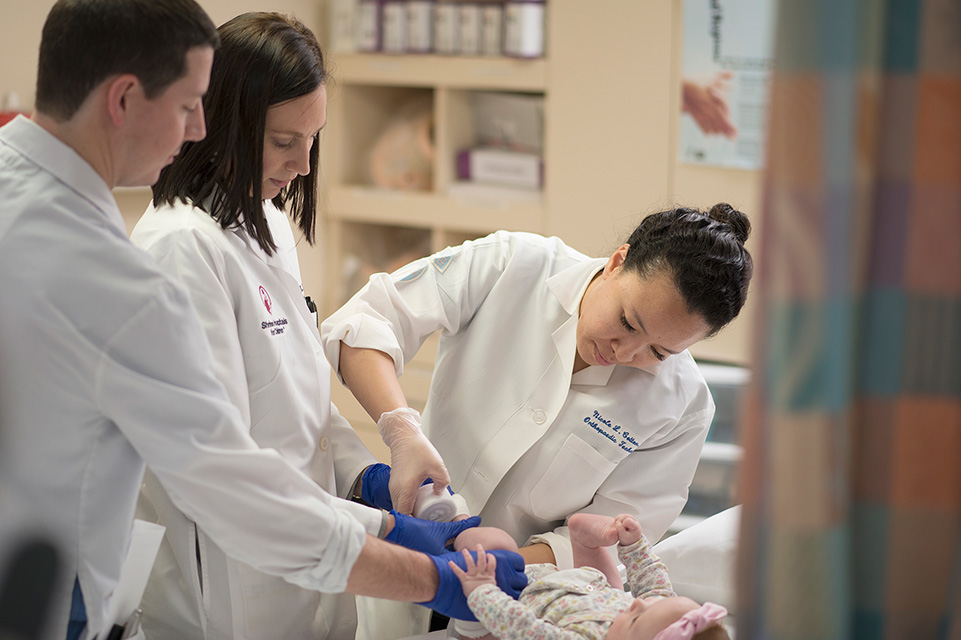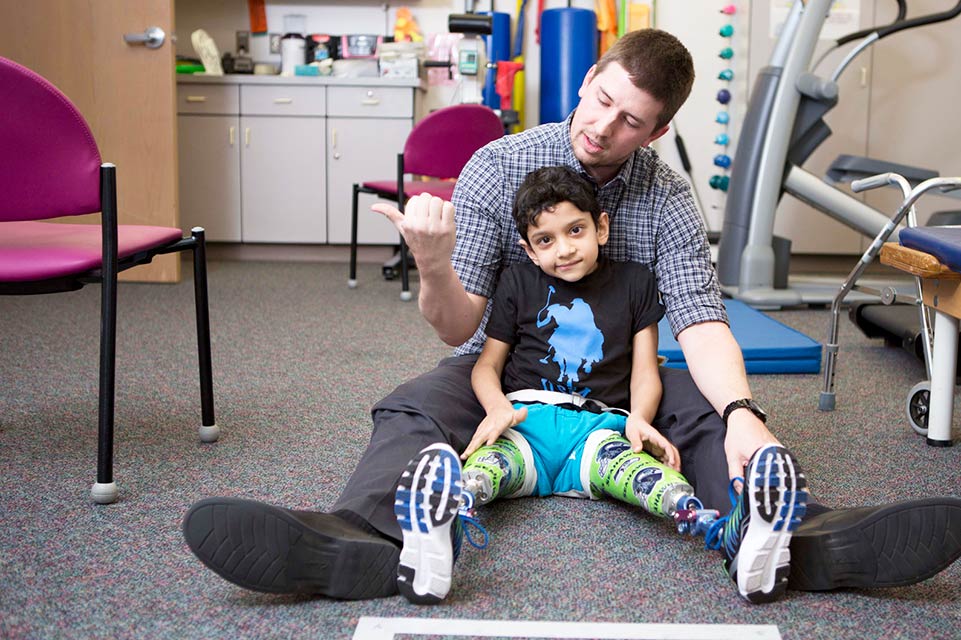Tarsal Coalition
At Shriners Children's, world-class orthopedic care helps patients with tarsal coalition walk, run and play freely.
Tarsal coalition happens when two or more tarsal bones located toward the back of the foot and in the heel grow or fuse together when they shouldn't.
Children usually don't show signs of the disorder until early adolescence, when the foot begins to feel stiff and painful. At Shriners Children's, we understand the challenges that often come with symptoms of tarsal coalition – and we're dedicated to ensuring your child is able to enjoy a pain-free life.
After a physical exam, a pediatric orthopedic physician will order an imaging test – like an X-ray – to determine whether or not your child has tarsal coalition. Sometimes, physicians will use a non-invasive imaging scan, like a CT or MRI, to take an even closer look at the tendons and bones in the foot.
For many children with tarsal coalition, orthotics (shoe inserts) and physical therapy or casting help relieve symptoms significantly. However, if your child's symptoms are severe and continue to make everyday activities feel difficult, your physician might recommend surgery.
Specific treatments and services may vary by location. Please contact a specific location for more information.
Symptoms of Tarsal Coalition
Most children with tarsal coalition don't experience painful symptoms until sometime between the ages of 8 and 16. If your child begins complaining of any of the following symptoms, he or she might have tarsal coalition:
Pain: Usually around the ankle and top of the foot (although some children don't feel any pain).
Flat feet: Makes walking, especially on uneven surfaces, difficult. Children with flat feet or a flat foot caused by tarsal coalition might sprain their ankles more often.
Stiffness: Makes using the foot difficult or painful.
Muscle spasms: Might cause the leg to turn outward when walking.
Learn About Tarsal Coalition Treatments
Our award-winning physicians know every child is different. That's why your child's treatment plan for tarsal coalition is individualized. Here, you'll find some of the nonsurgical and surgical options your care team might suggest:
Rest
Sometimes a break from high-impact activities (like running and jumping) is all your child needs. After three to six months of rest, your physician will reassess the tarsal coalition.
Orthotic Devices
Arch supports, shoe inserts, and other orthotic devices can help distribute your child’s weight, stabilize their foot, and relieve pain.
Physical Therapy
From stretching exercises to range-of-motion exercises and massage, our rehab specialists work with your child's care team to create a therapy plan designed to improve your child’s flexibility and stability.
Injections
Some children benefit from cortisone (steroid) shots, which can reduce pain and swelling when injected into the affected area.
Resection Surgery
If symptoms aren't relieved by nonsurgical treatment, your child's physician might suggest resection surgery. During this type of procedure, the tarsal coalition is removed from your child’s foot to allow for more normal range of motion.
Fusion Surgery
If your child's tarsal coalition is severe, fusion surgery can significantly reduce pain. During the procedure, a pediatric orthopedic surgeon will realign the foot and ankle bones into their correct positions and stabilize the joints.
Innovative Treatments
View All Related Treatments
Orthopedic Surgery

Physical Therapy


